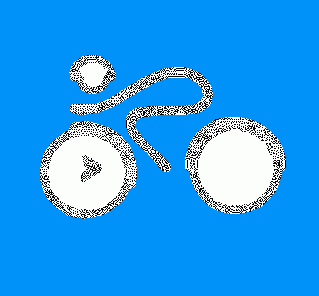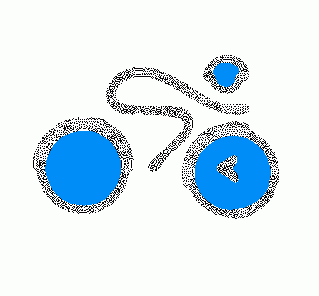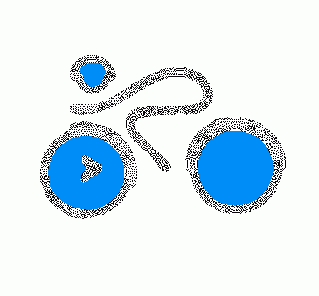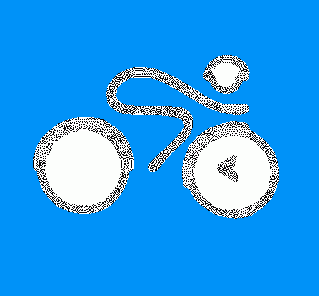| Newsletter - 2007 Archive |

|

|
Cycling Club |

|

|
| Newsletter - 2007 Archive |

|

|
Cycling Club |

|

|
Next--->
|
Wim rode this June 30 - July 1 2007 Banff-Jasper-Banff
Classic in Reverse 600 km After I qualified for PBP at the end of May, there was the challenge to maintain form and fitness during the intervening 3 months until Paris Brest Paris takes place in late August. Training is one thing. Riding a brevet is another. Not only is it rewarding in the sense that it imposes time limits, a brevet also tests one's resolve to set and achieve goals. So the 600 km Banff-Jasper-Banff Classic Brevet provided that challenge. While this brevet had been on Alberta Randonneurs' books for many years, it had not been attempted recently. The ride starts in Banff, takes the Lake Minnewanka Loop, then goes to Jasper and back to Banff. The route follows the Icefield Parkway, dissecting a mountain landscape of incredible grandeur, familiar to anyone who has completed the RM 1200 (http://www.randonneurs.bc.ca/rocky/rm1200.html). The route includes two major mountain passes, which have to be ascended twice: on the way out and on the way back. There's the Col de Sunwapta (2,035m) and the Col de Bow (2,065 m). Absolutely no lack of climbing (see http://www.randonneurs.bc.ca/rocky/profile-2004_detail-2.html). I got permission from the ride organizer to ride it as the Banff-Jasper-Banff Classic in Reverse. This would shorten my driving distance by almost 600 km. That also made sense, since I'd be riding the brevet solo. By the time I'd made up my mind on doing this brevet both Jasper and Lake Louise were solidly booked for motel space. The only working men's accommodation was a bunk at the Banff Mountain Y for $ 31.00 per night. This also meant that the 600 km brevet would be split in two nearly equal sections. Weather wise it promised to be a very good weekend with temperatures forecast to hover between 5 and 20 deg. C. No rain or wind. Daylight would run from about 5:00 am to 23:00 pm, about 18 hours. June 30/07, the ride began innocently enough at 7:00 am with a short uphill section to the Maligne Canyon Teahouse. As I approached, a tiny deer watched and then disappeared into the woods. Since no-one was home at the Teahouse (Km 11 @ 7:28 am), I noted the time on the control card, turned around and let gravity take care of my down hill. Near one of the bends a slender, but large cow elk towered above me. Both of us were equally surprised by this encounter of the wild kind, both too stunned to (re)act. After that wildlife was limited to herds of sheep and mountain goats, who did their traditional thing: watching tourists watching them. There was one black bear, luckily behind a wild life fence, somewhere between Banff and Lake Louise. At 8:08 am I parted with a C$ 8.90 fee at the Icefield Parkway Gate. From then on the grade was up only a few percentages, occasionally steepening to deal with rollers. Made a stop at Sunwapta Falls (Km 79 at 10:25 am), passed the Beauty Creek YH , which brought back fond memories of the 2004 RM 1200. It was a control post during that event. Soon after the road drastically steepened, the final ascent to the Columbia Icefields and Sunwapta Pass (2,035 m), with a break at the Columbia Icefield (Km 129.0 @13:20 pm). Normally the descent from the Pass is a scream, this time there was fierce head wind, which resisted my pace to no more than 30 kph even when pedaling. Once on the flatter section to Saskatchewan Crossing (Km 180 @ 15:40 pm), the cycling became almost effortless, due to a tailwind descending from the glaciers. The next challenge came after the Crossing, first a 6 km climb, which then leveled off to a gentler grade for the next 30 km or so, only to be followed by yet another steep climb to the Bow Pass (2,065m). From then on it was just about all the way downhill to Lake Louise (19:54 pm) and Banff (Km 320.0 km @ 22:10 pm). I arrived at the Y just as the sun was about to set, perfect timing. Day 1 was done. After a 5-hour light sleep, I left for Lake Louise just before dawn; the temperatures dropped to near the freezing mark. It was cold, and so was I. By the time I hit Lake Louise (Km 380 @ 07:20 am) I sat down for an extensive breakfast. That went down very well. The return climb up the Bow Pass was remarkably easy, the descent to Saskatchewan Crossing (Km 462 @ 12:00 noon) even easier. After the Crossing the fun began, actually the word 'challenge' is more fitting. Not only was the grade steady uphill, there was also an ugly headwind, a katabatic wind from the Saskatchewan glacier. That same one that helped me a day earlier. And the real climbing hadn't even started yet. There was nothing easy about the ascent to the Col de Sunwapta. It was steep, long and seemed to go on forever. Yes, there was the Big Bend for a brief respite. Then the next section. One must admit though that the climb is as literally and figuratively as breathtaking as the mountain scenery, and as rewarding as reaching the Pass. Wow. Then, there were the snow banks along the road near Parker Ridge. Some tourists returned with skis and snow boards from some belated winter (summer?) fun on July 1, 2007! Following a brief break at the Icefield Centre (15:50 pm), there were a little over 100 km left, and most was downhill. Time for the irresistible mountains to pay back, and for me to cash in. During most of Day 2, I had cycled close to the time limit, but that was by design. I knew that I needed to pace myself on those long ascents. After the Icefield Center the downhill helped to put distance between my passing time and the closing time of each control. Time to collapse this proverbial time-space dimension. It was 20:16 pm, when I signed off in Jasper, now almost three hours within the 40 hour limit. The ride had gone well, also considering that it was solo effort. The total elevation gain was 5,504 m or 18,057 feet. (Day 1: 3,027 m and Day 2: 2,477 m). I rode this brevet rather conservative; at each control I took a break, ranging from 5 minutes to nearly an hour. The net cycling time was about 26:45, the off-bike time 10:31. While the breaks were in a sense a draw-back in terms of time loss, they did allow for physical recovery. After all, the nature of the terrain required this almost 'mandatory' luxury. On the other hand, it also demonstrated how easily one can 'fritter away' valuable time. This is an important point for those interested in 'making' time on brevets like PBP, where controls are often crowded. Managing these controls efficiently is one of the finer arts of randonneuring. The only thing I'd do differently next time around, would be to start from Jasper at the crack of dawn, say 4:30 am, do the Maligne loop first, then go to Banff and return to Lake Louise for a sleep break. That way one would cover almost 380 km on Day 1, with about 230 or remaining for Day 2. For me the ride was a good preparation for PBP, especially since I qualified so early in the season. A mountain brevet with this special allure, the physical and mental challenge, and the billion-dollar views is but one big bonus. The timing was also perfect in that the course provided these endless magnificent carpets of alpine flowers, colourful mosaics that are forever changing depending on what aspect and elevation the route is. That was one of the silent and subtle wonders on this brevet. 't Was well worth it. July 10, 2007 |
_